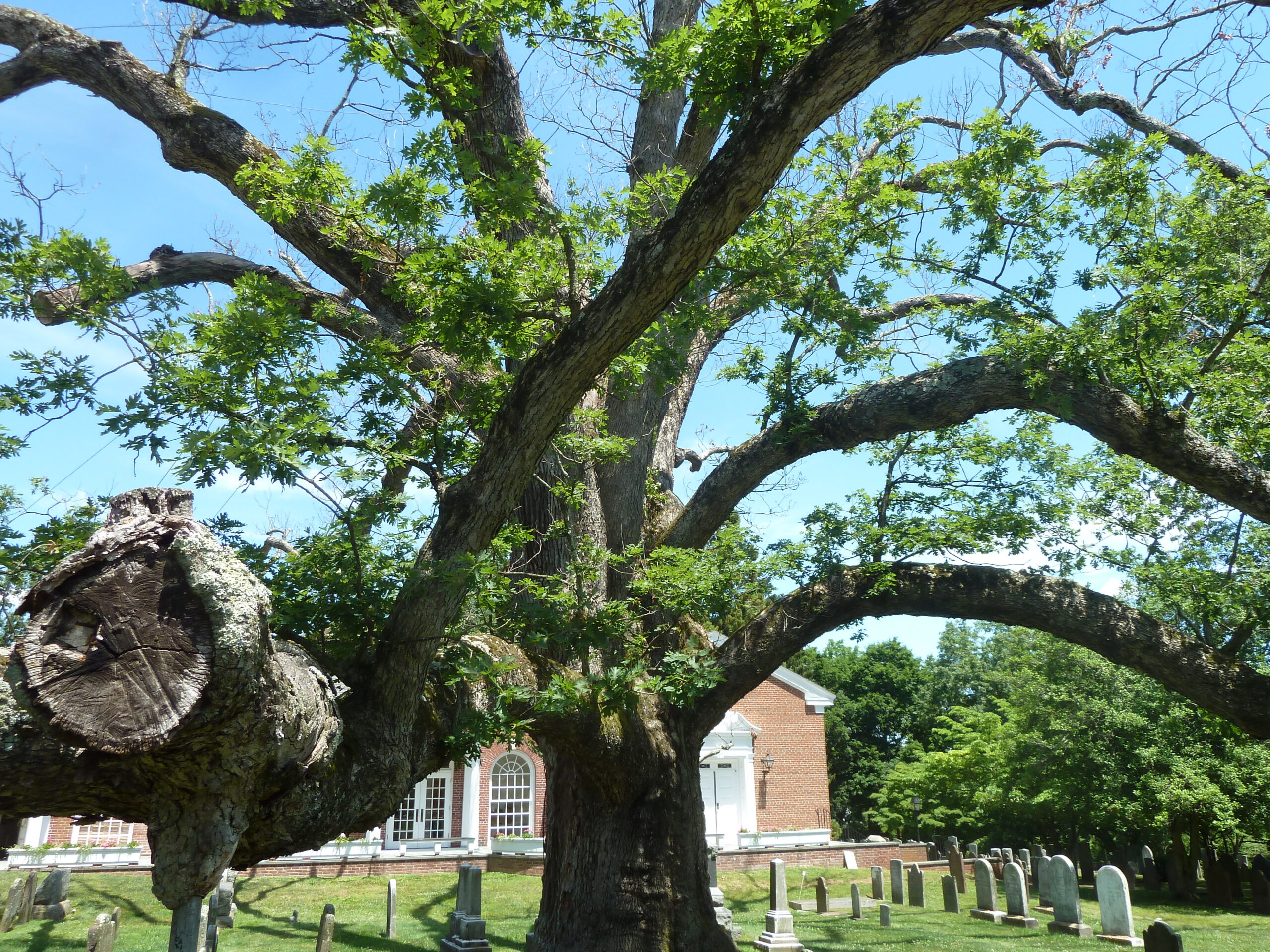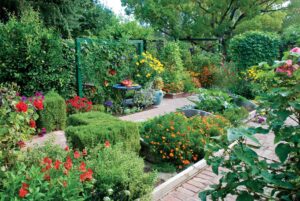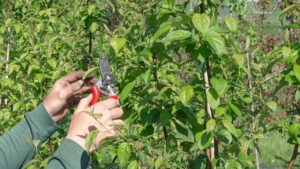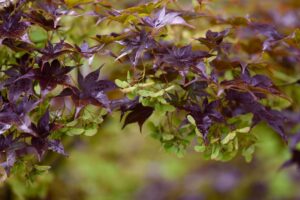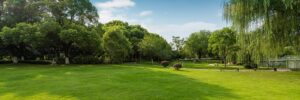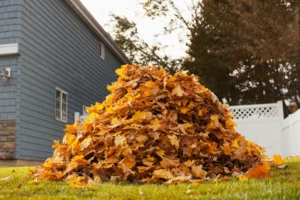Tree for Frontyard Landscaping and Backyard Landscaping in the USA
When it comes to landscaping in the USA, choosing the right trees for your front yard and backyard is crucial. The trees you select will not only enhance the aesthetic appeal of your home but can also provide shade, improve air quality, attract wildlife, and even increase your property value. There are various trees suitable for both front and backyard landscaping, each with its unique benefits and features. In this article, we’ll explore five trees ideal for front yard landscaping and five for the backyard, along with their benefits, identification features, and why they are valuable additions to your landscape.
Front Yard Trees for Landscaping
1. Dogwood (Cornus florida)

Identification: The Dogwood tree is a deciduous tree known for its stunning spring blooms. It features white or pink flowers, dark green leaves that turn reddish-purple in fall, and bright red berries that attract birds.
Benefits: Dogwood trees are excellent for front yard landscaping due to their ornamental value. They provide stunning color throughout the seasons: flowers in spring, lush green foliage in summer, and vibrant leaves in the fall. The tree remains relatively small, growing up to 20-30 feet, making it suitable for compact spaces.
Fact: Native to the eastern United States, the Dogwood tree is known to be low-maintenance and resistant to many pests and diseases.
2. Red Maple (Acer rubrum)

Identification: The Red Maple is a medium to large-sized deciduous tree, growing up to 40-60 feet tall. It is recognized by its three-lobed leaves that turn a vibrant red or orange in the fall.
Benefits: Red Maple trees offer spectacular autumn color, making them an excellent choice for enhancing the curb appeal of your front yard. They grow relatively fast, providing shade quickly, and are adaptable to different soil types, including those with poor drainage.
Fact: The Red Maple is considered one of the most versatile and resilient native trees in North America, thriving in various environmental conditions.
3. Japanese Maple (Acer palmatum)
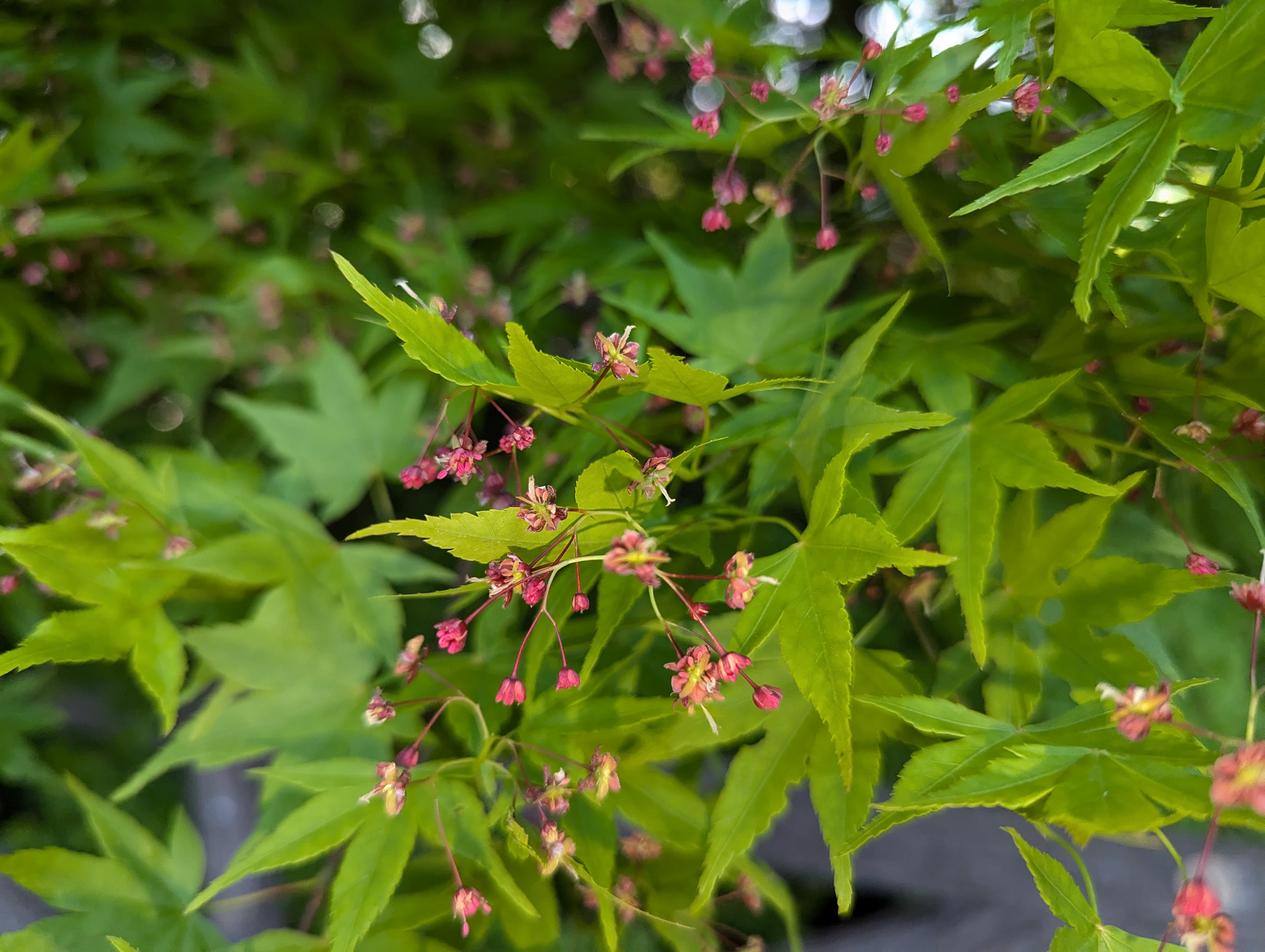
Identification: Japanese Maple trees are small ornamental trees with delicate, lacy leaves. They can grow 10-25 feet tall depending on the variety. The leaves come in various shades, including red, green, and purple, depending on the season and cultivar.
Benefits: Japanese Maples are ideal for front yards due to their striking foliage and compact size. They add an exotic touch to the landscape and are perfect for smaller spaces or planting near patios and walkways.
Fact: Japanese Maples are highly prized for their unique leaf shapes and vibrant fall color, making them a favorite among landscape designers and gardeners.
4. Magnolia (Magnolia grandiflora)

Identification: Magnolia trees are known for their large, fragrant white flowers and glossy green leaves. These evergreen or semi-evergreen trees can grow up to 80 feet tall, but smaller cultivars are available for landscaping.
Benefits: Magnolias are ideal for front yard landscaping as they provide year-round beauty, with their evergreen foliage and stunning blooms. They are drought-tolerant once established and can add a touch of Southern charm to any yard.
Fact: Native to the southeastern USA, Magnolias are associated with luxury and elegance, often symbolizing beauty and perseverance.
5. Eastern Redbud (Cercis canadensis)

Identification: The Eastern Redbud is a small deciduous tree, growing up to 20-30 feet tall. It is recognized by its heart-shaped leaves and beautiful pink or purple blooms in early spring.
Benefits: The Eastern Redbud is perfect for front yards due to its early spring blooms that appear before the leaves, creating a vibrant display. It is low-maintenance and can thrive in a range of soil conditions.
Fact: This tree is native to North America and is often called the “harbinger of spring” due to its early flowering. It’s an excellent choice for pollinators like bees.
Backyard Trees for Landscaping
1. Oak (Quercus spp.)

Identification: Oak trees are large, majestic trees that can grow up to 70-100 feet tall. They are characterized by their lobed leaves and acorns, which provide food for wildlife.
Benefits: Oaks are excellent for backyard landscaping as they provide substantial shade, create habitat for birds and squirrels, and contribute to the overall biodiversity of the area. They are long-lived trees that can become a centerpiece in your backyard.
Fact: Oaks are known for their strength and durability. Many species of Oak trees, such as the White Oak and Red Oak, are native to the USA, and they are symbols of endurance and strength.
2. Southern Live Oak (Quercus virginiana)
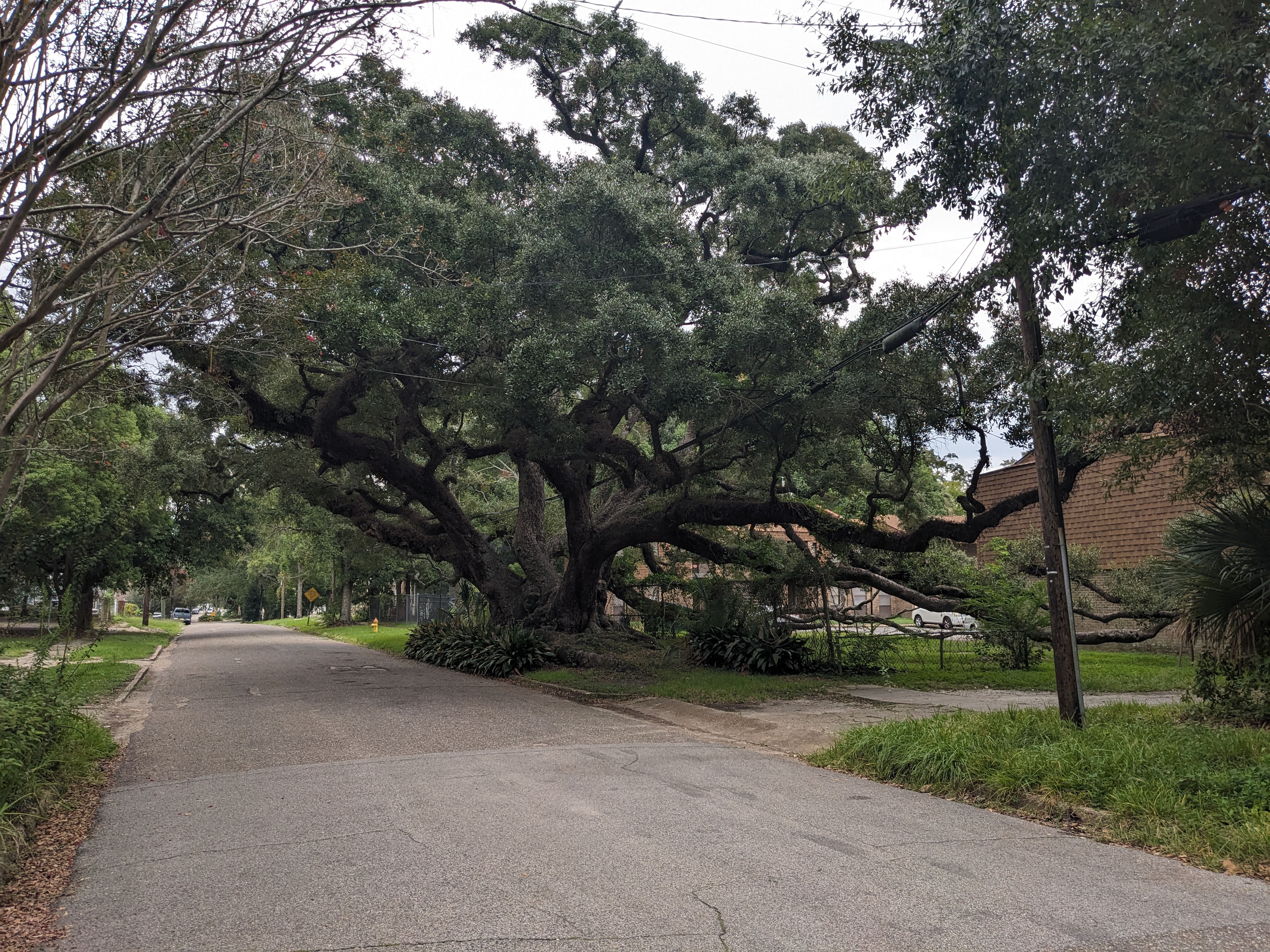
Identification: Southern Live Oaks are large, sprawling evergreen trees with thick, leathery leaves. They can grow up to 60-80 feet tall and are often draped with Spanish moss in the southern United States.
Benefits: These trees are perfect for creating shade in your backyard and offer a grand, majestic appearance. The tree’s massive branches provide a great habitat for birds and squirrels. Live Oaks are also highly resistant to drought and can live for centuries.
Fact: The Southern Live Oak is a symbol of strength and longevity. Some of these trees are over 500 years old, making them an impressive addition to any backyard.
3. Fruit Trees (Apple, Peach, Cherry)

Identification: Fruit trees like apple, peach, and cherry vary in size depending on the species but typically grow between 10-25 feet tall. These deciduous trees have blossoms in spring and produce fruit during summer or fall.
Benefits: Fruit trees are a fantastic addition to your backyard landscaping. Not only do they provide beautiful spring flowers, but they also offer the practical benefit of fresh fruit harvests. They are relatively low-maintenance and can attract pollinators like bees and butterflies.
Fact: Planting multiple varieties of the same fruit tree (e.g., different apple varieties) can increase pollination success and lead to higher fruit yields.
4. Weeping Willow (Salix babylonica)

Identification: Weeping Willows are known for their graceful, drooping branches and elongated leaves. They can grow up to 35-50 feet tall and thrive in moist, well-drained soils.
Benefits: These trees are perfect for adding a serene, peaceful element to your backyard. They are often planted near water features like ponds or streams. The shade provided by their extensive canopy is ideal for creating a relaxing space in your yard.
Fact: Weeping Willows grow quickly, making them an excellent choice for homeowners looking to establish mature landscaping in a short period of time.
5. Sugar Maple (Acer saccharum)

Identification: The Sugar Maple is a large deciduous tree that can grow up to 70-100 feet tall. It is known for its vibrant fall foliage, which ranges from golden yellow to deep red.
Benefits: The Sugar Maple is perfect for backyard landscaping due to its shade and its stunning fall display. It is also the tree from which maple syrup is harvested, adding a functional aspect to its beauty. Sugar Maples grow well in a variety of soil conditions, though they prefer well-drained, moist soil.
Fact: The Sugar Maple is the state tree of several U.S. states, including New York and Vermont, where maple syrup production is a major industry.
Benefits of Landscaping with Trees
Adding trees to your landscape offers a wide range of benefits, from enhancing the beauty of your home to providing functional elements like shade and windbreaks. Here are a few key benefits:
- Increased Property Value: Homes with well-landscaped yards, including trees, can see an increase in property value. Trees add curb appeal and make homes more attractive to buyers.
- Environmental Impact: Trees improve air quality by absorbing carbon dioxide and releasing oxygen. They also provide habitat for wildlife, contribute to biodiversity, and help reduce the urban heat island effect by cooling the surrounding environment.
- Energy Savings: Properly placed trees can reduce energy costs by providing shade in the summer and acting as windbreaks in the winter. This can lead to reduced reliance on air conditioning and heating.
- Privacy and Noise Reduction: Larger trees can act as natural barriers, providing privacy from neighbors and reducing noise pollution from nearby roads or urban areas.
- Aesthetic Appeal: Trees bring natural beauty to any landscape, offering seasonal interest through blooming flowers, colorful fall foliage, and evergreen leaves that provide year-round greenery.
How to Identify Trees for Landscaping
Each tree has unique characteristics that make it stand out. Here’s how you can identify some of the most common landscaping trees:
- Leaves: The shape, color, and size of a tree’s leaves are key indicators. For example, the lobed leaves of the Oak tree or the heart-shaped leaves of the Redbud are distinct.
- Bark: The texture and color of the bark can help identify a tree. For instance, Birch trees have smooth, white bark, while Oak trees have rough, deeply ridged bark.
- Flowers and Fruit: Many ornamental trees, like the Magnolia or Cherry tree, are easily identified by their blooms. Similarly, fruit-bearing trees can be identified by their fruits, such as apples or peaches.
- Size and Shape: The height and overall shape of the tree (e.g., the weeping branches of the Willow or the pyramid shape of the Spruce) are also useful for identification.
FAQs “Tree For Frontyard and Backyard Landscaping” in the USA:
1. What are the best trees for front yard landscaping?
- Some of the best trees for front yard landscaping include Dogwood, Red Maple, Japanese Maple, Magnolia, and Eastern Redbud. These trees offer ornamental beauty, vibrant seasonal colors, and are well-suited for smaller spaces.
2. What trees are recommended for backyard landscaping?
- For backyard landscaping, trees like Oak, Southern Live Oak, Fruit Trees (Apple, Peach, Cherry), Weeping Willow, and Sugar Maple are great choices. These trees provide shade, attract wildlife, and add a serene ambiance to your yard.
3. How do I choose the right tree for my landscape?
- When selecting a tree for your landscape, consider factors like tree size, growth rate, soil type, water needs, climate, and whether you want shade, privacy, or ornamental value.
4. What are the benefits of planting trees in my yard?
- Trees provide numerous benefits such as enhancing property value, improving air quality, providing shade, reducing energy costs, and offering privacy. They also contribute to the environment by supporting wildlife and reducing noise pollution.
5. How can I identify the best tree for my region?
- Consider native tree species that are well-adapted to your local climate. Check with local nurseries or landscaping experts for recommendations based on soil type, weather conditions, and your landscape’s specific needs.
6. Are fruit trees a good option for backyard landscaping?
- Yes, fruit trees like apple, peach, and cherry trees not only offer beautiful blossoms but also provide fresh fruit. They attract pollinators and can be relatively low-maintenance, making them ideal for backyard gardens.
7. What is the difference between front yard and backyard trees?
- Front yard trees tend to be smaller and ornamental to enhance curb appeal, while backyard trees are often larger, providing shade and privacy. Trees in the backyard are also more functional for relaxation or outdoor activities.
8. How do trees add value to my property?
- Well-placed trees improve the aesthetic appeal of your home, provide energy savings through shade and wind protection, and can increase property value by making the landscape more attractive to potential buyers.
9. What tree species provide the best shade?
- Trees like Oak, Maple, and Weeping Willow provide excellent shade due to their large canopies. These trees are ideal for creating a cool, shaded space in your backyard.
10. How can I care for newly planted trees?
- Newly planted trees require regular watering, mulching, and protection from pests. Proper pruning and fertilization also help promote healthy growth. Be sure to choose the right location based on sunlight and soil needs for the specific tree species.
